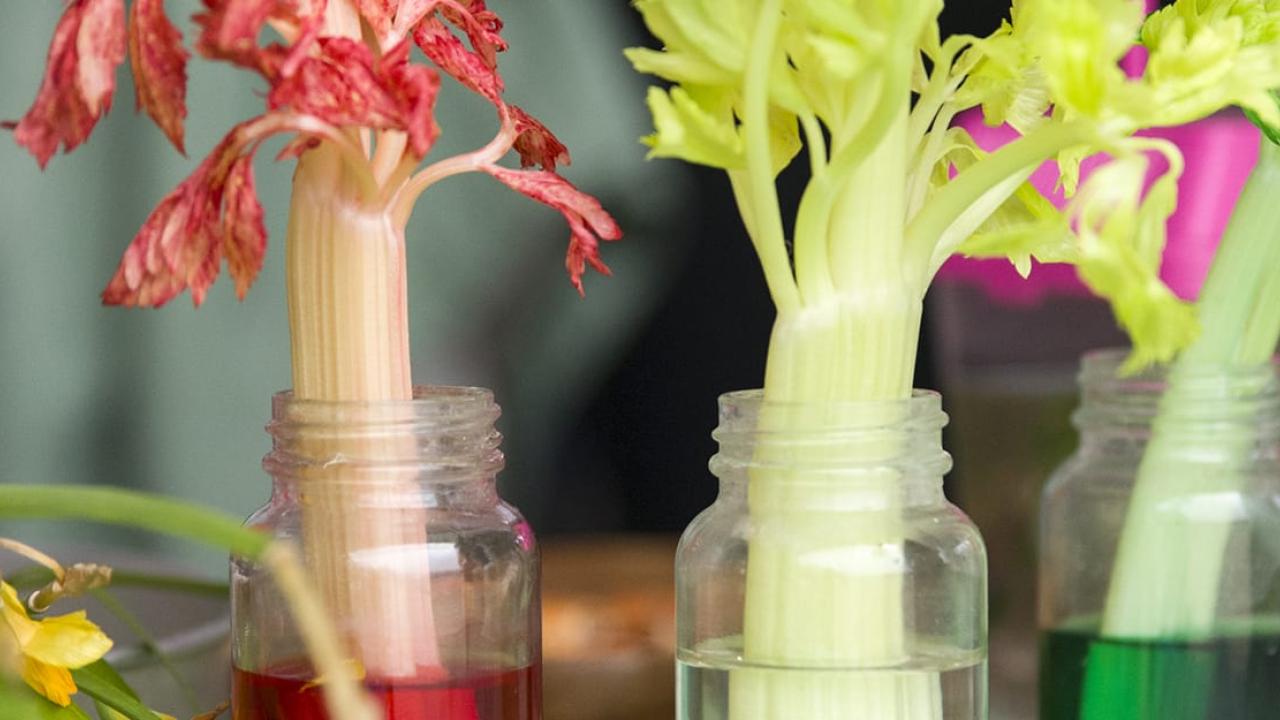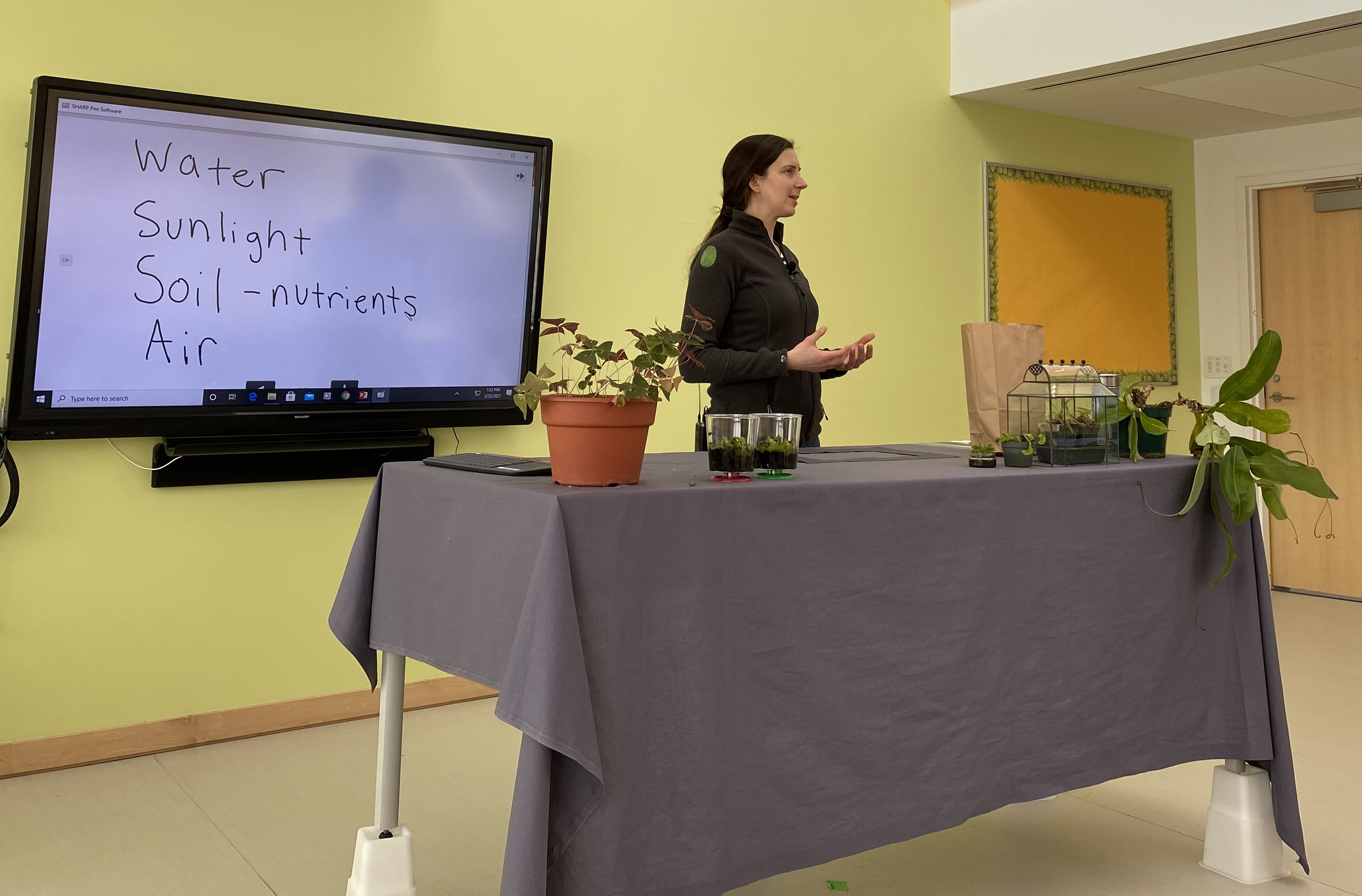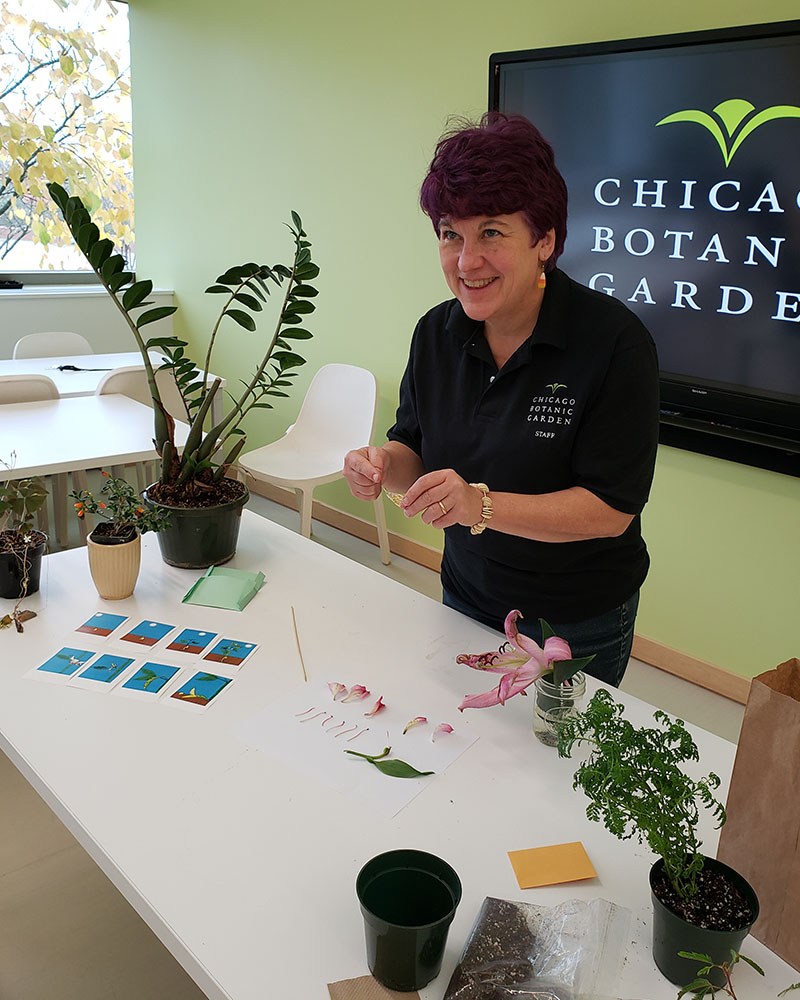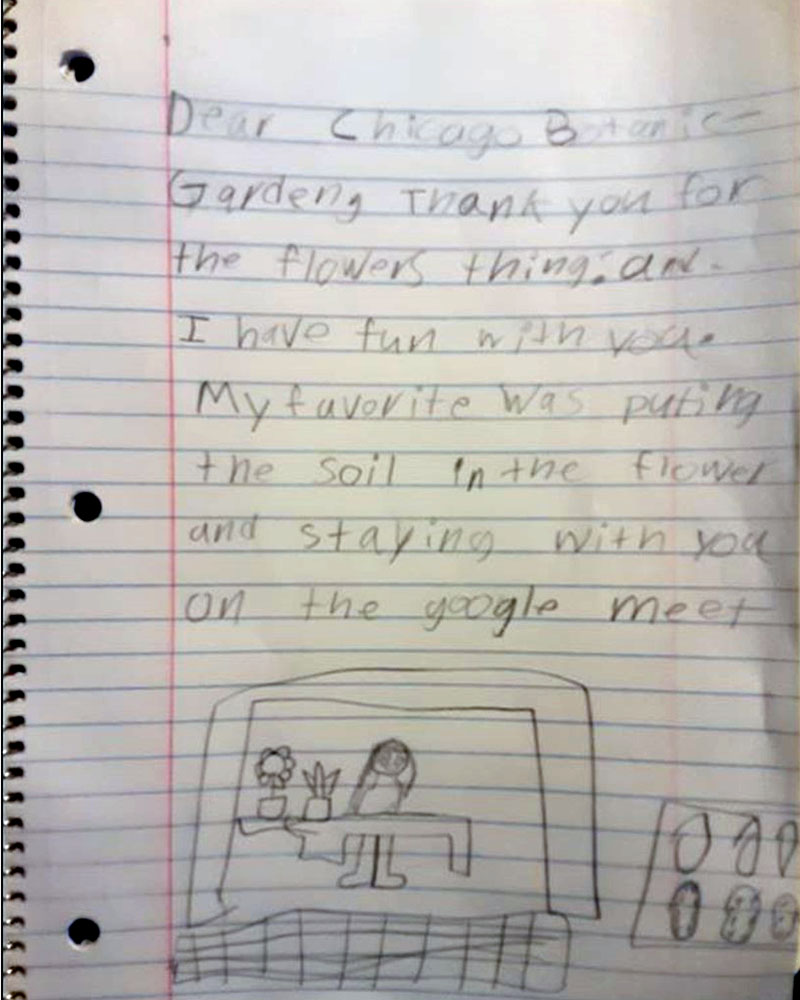

Learning
Garden Stories
Pondering Venus fly traps and other virtual wonders
“Can a Venus fly trap bite off your finger?” Jose asked, on a virtual field trip to the Chicago Botanic Garden. With an overhead camera, I zoomed into the Venus fly trap to show him that the plant’s snapping mechanism is smaller than the tip of my finger and not nearly as strong. The fast-closing leaves have pointy edges that act like a cage to prevent a fly’s escape—but they don’t bite off fingers, I explained.
As the pandemic evolved, the Garden first started offering virtual field trips last year as a way to bring the natural world to students who were participating in remote learning at home. In order to do so, we remodeled a classroom and purchased equipment including cameras, computers, and a sound system. Our learning team learned a new set of skills, both in front of and behind the camera.

Our virtual classroom in action
As the Garden’s youth programs director, I wasn’t sure what to expect. What we found is that the field trips gave students a break from remote learning routines and inspired them to think about and get engaged with nature.
The hands-on component is key. After a teacher signs up for a field trip, we deliver kits of materials for every student. Students pick up the kits at the school. Every virtual program includes a live plant or seeds that we plant together. Thanks to a generous donor, we offer this program free of charge for all schools that serve a population where 50 percent or more students are considered “low income” by the state of Illinois.
We love the enthusiastic questions and discussions. Here’s what happened in one program: “Teacher, when do I water my plant?” asked Priya, about the marigold she had just transplanted. Here’s the trick, I told her. Stick your finger in the soil and feel underneath the surface. I showed the class how to do this on camera. If it’s dry, give it some water. Don’t water it again until it’s dry. You have to check it every day.
Cherise chimed in that her grandfather has a garden. I suggested that maybe he will make room for her new marigold in his garden. But I told her that she will have to take care of it in the pot until it’s warm enough to move outside.
Students and teachers have shared their joy being able to participate in the nature education program. My favorite reaction was from a student who wrote and drew a thank you letter.


His drawing shows me appearing on a computer screen, at a table with two plants. To the right of the screen, the student drew pictures of what he learned about the life cycle of a plant.
We look forward to a day when we can safely welcome school groups back to the Garden. Meanwhile, we’re doing all that we can to bring the Garden to students.
Learn more about virtual field trips.

